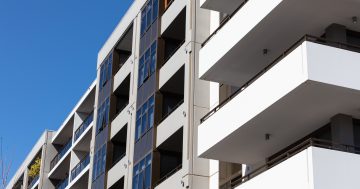
Waste chutes could be costing owner’s corporations upwards of $46,000 a year. Photo: File.
Making waste chutes a mandatory requirement for new developments can lead to hidden costs and environmental impacts, according to a leading strata expert.
Vantage Strata managing director Chris Miller is calling for developer discretion in devising the best waste disposal solutions for new apartment buildings.
“Waste chutes can be an excellent amenity, many residents like them. The issue is with the requirement for chutes to be installed on all new residential buildings with four or more floors, which does not give any discretion to the developer,” he said.
“That is predicated on the idea that waste chutes are always the best solution environmentally and economically when in fact, there are hidden costs and environmental impacts that the designers of this policy have missed.”
Mr Miller wrote a white paper titled The Unintended Disruption & Cost of Waste Chutes in Apartment Buildings which, based on a building with two chutes, shows maintenance and administration can cost owners’ corporations upwards of $46,000 a year.
This was broken down into the cost of usual maintenance and administration, along with the relatively high cost of the logistics, administration and management required to remove blockages.
This included both internal and external services to physically remove blockages, after-hours labour penalties and additional rubbish pick-ups resulting from blockage-induced delays.
Poor resident behaviour was identified as the number one cause of expensive waste chute blockages.
Physics also played a large part, with numbers indicating the waste chute solution worked best in lower-rise buildings.
Mr Miller said the “law of large numbers” also applied, as blockages tended to occur more frequently in high-density buildings.
The data also suggested demographics played a part, indicating that waste chutes worked “infinitely better” in buildings with a higher proportion of owner-occupiers.
“Let the developer determine, based on all these factors, what the most appropriate solution is, and let the market decide what amenities it values most,” he said.
“Like a swimming pool or gym, waste chute amenities are another buying decision and some residents might prefer their body corporation fees go towards other things.”

Vantage Strata managing director Chris Miller says waste chutes are not necessarily a complete solution. Photo: Liv Cameron.
Mr Miller said while security cameras were often part of the solution in tracking and deterring poor resident behaviour, it was sometimes cost-prohibitive.
“It can cost upwards of $5000 per camera and would be highly contingent on whether there was the necessary cabling running to the right locations,” he said.
“Typically you wouldn’t see a building provisioned with cabling running up through areas adjacent to the waste chutes because developers don’t necessarily contemplate a need for cabling from the ground floor all the way up to level 17.”
One low-tech alternative solution was a shared centralised waste disposal space for all residents.
But Mr Miller said most importantly, policymakers should shy away from anything that might box out future superior solutions.
“Waste management technology and building technology is actually advancing at quite a pace,” he said.
“There’s the risk that being too rigid could lead developers to solutions that box them out of taking advantage of future capabilities.”
“For example, consider that waste chutes tend to support smaller centralised waste rooms. While from the outset this might seem a more efficient use of building space, it might be that future government or municipal initiatives or technological improvements make it more suitable to have green waste or composting or other waste management solutions.
“Retrofitting buildings for those capabilities would be expensive, if possible at all. There’s a good chance those buildings would just not be capable of participating in those programs.”
As Canberra’s population grows, it’s estimated that 70 per cent of all new housing supply will be strata titled for the foreseeable future.





















